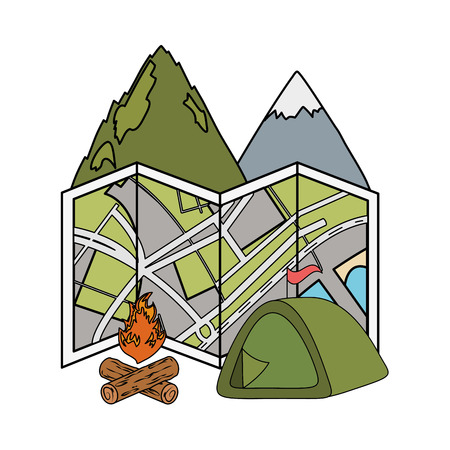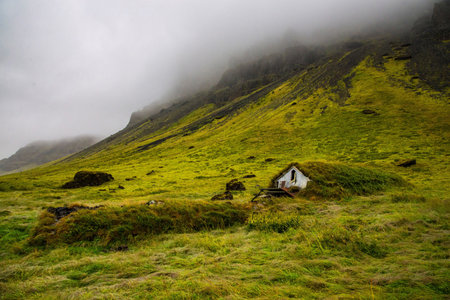Essential Packing List for Hill Station Camping
Embarking on a camping trip to the breathtaking Indian hill stations is an adventure every woman traveller should experience. Packing wisely is crucial, as the unique climate and cultural nuances of destinations like Himachal Pradesh, Uttarakhand, or the Nilgiris require special consideration. Here’s your comprehensive packing guide tailored for women campers.
Weather-Appropriate Clothing
The weather in Indian hill stations can be unpredictable—bright sunshine in the day and chilly winds at night. Pack lightweight cotton layers for daytime hikes and insulated jackets or shawls for cooler evenings. Don’t forget moisture-wicking innerwear, sturdy trekking pants, and a rain poncho or waterproof jacket for sudden monsoon showers. Traditional Indian attire like a comfortable kurti with leggings can also be practical and culturally respectful when visiting local villages.
Personal Hygiene Essentials
Maintaining hygiene while camping is essential. Carry biodegradable wet wipes, hand sanitiser, and menstrual products suited to your comfort—tampons, sanitary pads, or menstrual cups (be sure to bring a sealable bag for disposal). Include travel-sized shampoo, soap strips, sunscreen (SPF 30+), lip balm with SPF, and insect repellent. A quick-dry microfiber towel and a small mirror are handy additions.
Safety Gear & Health Must-Haves
Your safety comes first. A reliable torch (with extra batteries), a whistle, personal pepper spray, and a basic first-aid kit should top your list. For those planning treks, pack sturdy shoes with good grip suitable for rocky terrain common in places like Munnar or Darjeeling. Bring reusable water bottles with purification tablets or a portable filter—clean water isn’t always guaranteed in remote spots.
Respecting Local Customs
Being mindful of local customs is key to a respectful camping experience. Modest clothing that covers shoulders and knees is appreciated in most hill station communities. A light scarf or dupatta can be useful both for sun protection and as a gesture of respect in temples or rural settlements.
Packing Tips from Seasoned Campers
Opt for a backpack over suitcases—it’s easier to carry on uneven terrain. Use packing cubes to stay organised, and keep valuables like IDs, cash (in small denominations), and mobile phones secure in zippered pouches. Always carry a copy of your Aadhaar card or any valid ID for verification at campsites or police check posts.
2. Choosing Safe and Scenic Campsites
Exploring the breathtaking hill stations of India—whether in Manali, Ooty, Munnar, or Darjeeling—calls for careful selection of campsites, especially for women travellers. Prioritising safety, understanding local guidelines, and respecting community values are crucial steps to ensure a memorable and trouble-free camping experience.
Safety First: What Women Campers Should Consider
When picking a campsite, always opt for locations that are well-known and frequented by other campers or have the presence of local authorities. Avoid isolated spots, especially if you are travelling solo or with an all-women group. Here’s a quick checklist:
| Safety Aspect | Checklist |
|---|---|
| Proximity to Help | Choose sites near police posts or village panchayats |
| Mobile Connectivity | Ensure reliable network coverage for emergencies |
| Lighting & Visibility | Select open areas with natural visibility; avoid dense forests at night |
| Weather Considerations | Check seasonal risks (landslides in monsoon, cold snaps in winter) |
Understanding Local Regulations and Permissions
Different hill stations in India have unique rules about camping. For example:
- Manali: Some forested areas require Forest Department permits; camping in protected zones without permission is strictly prohibited.
- Ooty: Private tea estates may offer camping spots but always ask owners before pitching your tent.
- Munnar: Certain eco-sensitive areas restrict overnight stays; check with Kerala Tourism or local homestays for guidance.
- Darjeeling: Some locations fall under army jurisdiction—always clarify boundaries with local authorities.
If possible, inform your location to local police or village leaders (sarpanch) before setting up camp. It’s common practice and ensures local support if needed.
Respecting Local Communities and Customs
The hill station regions are home to diverse cultures and traditions. To maintain harmony and build trust, keep these tips in mind:
- Avoid loud music or late-night gatherings that could disturb nearby villages.
- Dress modestly when passing through rural settlements—cover shoulders and knees as a sign of respect.
- If invited for chai (tea) or snacks by locals, accept graciously—it’s a gesture of hospitality in Indian culture.
- Follow the principle of ‘leave no trace’: carry back all waste, especially plastics and food wrappers.
- If unsure about any customs or taboos (for example, entering temples during menstruation is discouraged in some places), politely ask your hosts or guides.
Quick Reference Table: Hill Station Camping Etiquette
| Cultural Dos | Cultural Donts |
|---|---|
| Greet locals with “Namaste” or “Vanakkam” (Tamil Nadu) | Avoid public displays of affection near villages |
| Seek permission before taking photographs of people/homes | Don’t enter private farmland without asking owners |
Your Safety is Your Priority!
No matter which Indian hill station you choose for your adventure, always trust your instincts. If something feels off—move on to another site. The right preparation and respect for local ways will help you enjoy the best of India’s highlands with confidence and joy.

3. Staying Safe: Health, Hygiene and Local Wildlife
Health and Hygiene Essentials for Women Campers
Maintaining health and hygiene is crucial when camping in Indian hill stations, especially for women travellers. Always carry a personal hygiene kit including hand sanitiser, wet wipes, biodegradable soap, menstrual products, and a small towel. Many campsites may not have modern toilet facilities, so packing a portable urination device or learning to use squat toilets can be helpful. Avoid drinking untreated water; instead, bring a portable water purifier or iodine tablets. Remember to keep your campsite clean and dispose of waste responsibly—this not only protects the environment but also reduces the risk of attracting wildlife.
Understanding Local Flora and Fauna
Indian hill stations are home to a diverse range of flora and fauna. Familiarise yourself with the local plants—some may cause skin irritation (like stinging nettles), while others might be useful in emergencies (such as aloe vera for burns). Be cautious when collecting firewood or walking through dense foliage, as snakes or insects like leeches may be present. If you’re camping during monsoon season, check for ticks after outdoor activities. Knowledge of common local wildlife—such as monkeys, wild boars, and occasionally leopards—is essential. Avoid keeping food inside your tent; use secure containers and hang supplies from trees if necessary.
Dealing with Unique Situations: Altitude Sickness & Wildlife Encounters
Many popular hill stations like Manali or Leh are at high altitudes. Watch out for symptoms of altitude sickness—headache, nausea, dizziness—and acclimatise gradually by taking frequent breaks and hydrating well. Do not ignore these symptoms; descend to a lower altitude if they persist. In case of wildlife encounters, stay calm and avoid sudden movements. For example, if you spot a bear or leopard nearby, slowly back away without turning your back or running. Respect the boundaries of wild animals; do not try to feed or photograph them from close quarters.
Local Wisdom: Tips from Fellow Indian Campers
Women campers in India often rely on community wisdom: travel in groups whenever possible, inform someone about your itinerary, and stay connected via mobile networks (carry a power bank as backup). Embrace the Indian tradition of carrying some neem leaves—they act as natural insect repellents! Lastly, trust your instincts and don’t hesitate to seek help from locals; people in hill regions are known for their hospitality and will often go out of their way to assist travellers in need.
4. Must-Try Camping Recipes with Indian Flavours
Nothing completes a hill station camping trip like a hot, flavourful meal after a day’s adventure. For women travellers looking for simple yet delicious food that brings the taste of India to the great outdoors, here are some camp-friendly recipes inspired by regional Indian cuisine. These recipes are designed to require minimal equipment and easy-to-carry ingredients—perfect for limited resources and group sharing.
Masala Chai: Comfort in a Cup
No Indian morning (or chilly evening!) is complete without masala chai. Here’s an easy version you can brew over your campfire:
| Ingredient | Amount | Notes |
|---|---|---|
| Black tea leaves or tea bags | 2 tsp or 2 bags | Strong Assam preferred |
| Water | 2 cups | |
| Milk powder or tetra pak milk | 1/2 cup equivalent | Easier to carry than fresh milk |
| Sugar/jaggery | To taste | |
| Ginger powder/cardamom/cloves/cinnamon | A pinch each | Pre-mix as “chai masala” at home for convenience |
Instructions:
Boil water, add tea leaves/bags and masala spices. Simmer for 2-3 minutes. Add milk powder/milk and sugar/jaggery, stir well, and serve hot.
Tawa Pulao: Mumbai Street Style on the Go
This one-pot rice dish is packed with veggies and spices—a filling, comforting meal that feels like home even under the stars.
| Ingredient | Amount | Tips for Campers |
|---|---|---|
| Cooked rice (pre-cooked or instant) | 2 cups | Packed in ziplock or container |
| Mixed vegetables (carrot, peas, capsicum) | 1 cup, chopped small | Canned/frozen work well if fresh not available |
| Pav bhaji masala or garam masala | 1 tbsp | |
| Tomato ketchup/puree sachet | 2 tbsp or 1 sachet | |
| Cumin seeds, salt, oil/ghee | ||
| Lemon/lime juice (optional) | A squeeze for freshness |
Instructions:
Add oil/ghee to a heated tawa or pan. Toss in cumin seeds and veggies; sauté till soft. Stir in masala, salt, tomato puree/ketchup, then mix in rice till everything is combined and hot. Garnish with lemon juice before serving.
Fire-Roasted Bhutta (Corn on the Cob): The Ultimate Hill Station Snack
No trek in Himachal or Uttarakhand is complete without roasted corn! Here’s how to make it over your campfire:
| Ingredient | Amount/Type |
|---|---|
| Corn on the cob (bhutta) | As many as needed – local varieties taste best! |
| Lemon wedges & chaat masala/salt/chilli powder mix | For seasoning after roasting |
Instructions:
Roast the corn directly over open flame until charred spots appear. Rub with lemon wedge dipped in chaat masala and chilli powder for an authentic roadside taste.
Packing Tips for Women Travellers:
- Pre-mix spice powders in small containers or zip pouches.
- Canned/instant foods save time and reduce weight.
- A sturdy tawa (flat pan) doubles up for multiple dishes and is easy to clean.
- Pocket-size thermos flasks keep chai warm during chilly hill station evenings.
- If travelling solo, cook smaller portions and pack leftovers securely to avoid wildlife attraction.
Savouring these comforting Indian flavours by your tent will make your camping experience both memorable and energising—perfect for women explorers seeking both adventure and a taste of home in India’s beautiful hills.
5. Navigating Local Culture and Etiquette
Understanding Dress Codes in Hill Stations
While Indian hill stations like Manali, Shimla, or Ooty are known for their laid-back atmosphere, it’s important for women campers to dress modestly, respecting local sensibilities. Opt for comfortable yet conservative clothing such as full-length pants, salwar kameez, or long skirts paired with T-shirts or kurtas. In certain hill regions with strong traditional values—like Uttarakhand or Himachal villages—covering your shoulders and avoiding tight or revealing outfits is highly appreciated. Carrying a lightweight scarf or dupatta can be handy for temple visits or when interacting in more rural areas.
Respectful Interactions with Locals
The warmth of the local communities in Indian hill stations is one of the highlights of the camping experience. Greet elders with a polite “Namaste” (palms pressed together), and use “Aap” instead of the informal “Tum” when addressing strangers or elders. Avoid public displays of affection and maintain a respectful distance during conversations, especially with men. If you’re invited into someone’s home or campsite, remove your shoes at the entrance as a mark of respect.
Essential Hindi Phrases for Travellers
Learning a few basic Hindi phrases will not only help you navigate but also win the hearts of locals:
- Namaste – Hello/Greetings
- Dhanyavaad/Shukriya – Thank you
- Kya aap madad karenge? – Can you help me?
- Mujhe yahan ka rasta batayiye – Please show me the way here
- Aap kaise hain? – How are you?
Observing Traditional Customs
Many hill stations have deep-rooted customs and rituals, especially during festivals like Dussehra, Diwali, or local fairs (melas). Women travellers should observe and participate respectfully: avoid entering religious spaces during prayer times unless invited, do not photograph people without permission, and always accept food or offerings from elders with both hands. Being sensitive to local practices not only enriches your camping adventure but also fosters genuine cultural exchange.
Your Respect Opens Doors
Navigating these cultural nuances ensures smooth interactions and leaves a positive impression wherever your tent is pitched. By being mindful of dress codes, greeting customs, key Hindi phrases, and traditional etiquette, women travellers can explore India’s breathtaking hill stations with confidence and grace.
6. Community Connections: Women-Led Camping Groups
For women travellers eager to explore the serene beauty of Indian hill stations, finding the right community support is essential for a safe and enjoyable camping experience. Across India, several women-specific adventure groups and online forums have emerged, creating empowering networks for female campers. These platforms not only provide guidance on campsite selection and local safety norms but also help in forming travel groups, sharing real-time updates, and offering emotional support.
Women-Focused Adventure Communities
Groups such as Women on Wanderlust (WOW Club), Girls on the Go Club, and The Wander Girls are popular among Indian women adventurers. These communities regularly organise group camping trips to hill stations like Manali, Munnar, and Ooty, ensuring that all arrangements—from tents to transport—are managed with womens safety in mind. They foster an environment where even first-time campers feel confident to join in and experience the outdoors.
Online Platforms & Forums
Digital spaces like Facebook groups (Indian Female Travellers) and WhatsApp networks allow women to connect, share itineraries, review campsites, and coordinate meet-ups. On these platforms, members discuss everything from monsoon camping tips in the Western Ghats to trusted local guides in Himachal Pradesh. These online communities act as virtual campfires where advice is exchanged freely, making solo or group camping less daunting.
Local Guides & Grassroots Initiatives
Several hill station destinations now feature certified local women guides who offer authentic insights into regional culture and ecology. Organisations such as Ladakhi Women’s Travel Company train local women as trekking and camping guides, promoting not just safety but also economic empowerment within hill communities. By choosing such guides or participating in community-led eco-campsites (like those near Coorg or Darjeeling), travellers contribute directly to sustainable tourism while enjoying the security of being with experienced locals.
Whether you are planning a Himalayan trek or a peaceful campout by the Nilgiris, tapping into these women-centric communities ensures you are never truly alone on your journey. With shared resources, collective wisdom, and a strong sense of sisterhood, India’s hill stations become more accessible—and much safer—for every woman adventurer.


